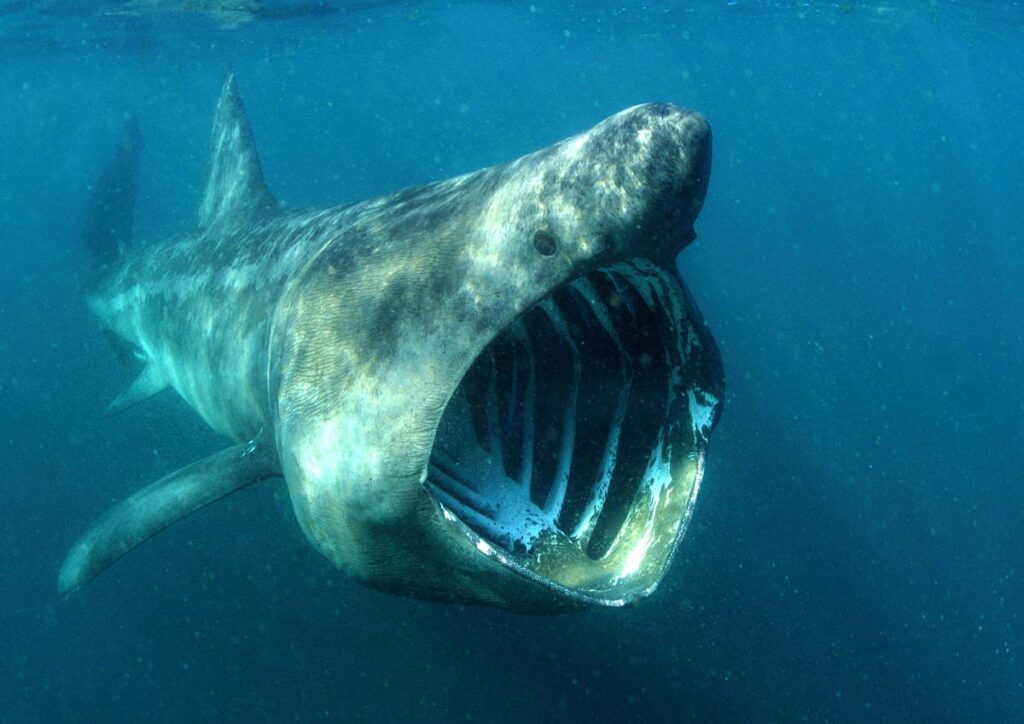Introduction
The basking shark, also known as Cetorhinus maximus, is a large, slow-moving shark that belongs to the family Cetorhinidae. It is one of the largest living fish species, with adults reaching lengths of up to 10 meters and weighing over 4 tons. Despite their size, basking sharks are gentle giants and feed mainly on plankton. In this article, we will explore the classification and evolution, behavior and lifestyle, reproduction and life cycles, diet and prey, conservation status, and interesting facts about the basking shark.
Classification and Evolution
The basking shark is the only extant species of the genus Cetorhinus, which is part of the family Cetorhinidae. This family also includes an extinct genus, Megamouth, which was discovered in 1976. The basking shark has a long evolutionary history, with fossils dating back to the early Eocene period, approximately 50 million years ago.
Behavior and Lifestyle
Basking sharks are slow-moving and spend most of their time near the surface of the water, often basking in the sun with their dorsal fin and tail above the water. They are known to migrate long distances, often following the plankton blooms on which they feed. Basking sharks are solitary animals and do not form schools or social groups.
Reproduction and Life Cycles
Basking sharks are oviparous, which means they lay eggs that hatch outside of the mother's body. Females can produce up to six eggs at a time, but typically only one or two hatch. The gestation period is thought to be around three to four years. The newborn sharks are about 1.5 meters long and are fully developed when they hatch.
Diet and Prey
Basking sharks are filter feeders, feeding mainly on plankton, such as krill, copepods, and small fish. They have a unique feeding mechanism that involves swimming with their mouth open, filtering water through their gill rakers, and trapping plankton in their gill rakers for consumption. Basking sharks can filter up to 2,000 tons of water per hour.
Conservation Status
Basking sharks are listed as vulnerable on the IUCN Red List of Threatened Species. They are not targeted by commercial fisheries, but they are often accidentally caught in fishing nets. Basking sharks are also at risk of habitat loss due to pollution and coastal development.
Interesting Facts
- Basking sharks have been known to breach out of the water, jumping up to 3 meters high.
- They have a lifespan of up to 50 years.
- Basking sharks are often seen swimming with their mouths open, which can make them appear more menacing than they actually are.
- Basking sharks have a unique liver that can account for up to 25% of their body weight. This liver is rich in oil and was once used to make lamp oil and lubricants.
Conclusion
Basking sharks are fascinating creatures that play an important role in the ocean ecosystem. While they are not actively hunted, they are still at risk of accidental capture and habitat loss. By understanding more about their behavior, lifestyle, and biology, we can work towards protecting these gentle giants for future generations to enjoy.


Comments
Post a Comment